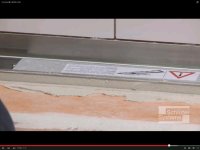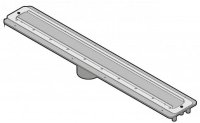ndjur
New Member
- Messages
- 21
- Reaction score
- 0
- Points
- 1
I'm redoing my bathroom and trying to decide which linear drain to go with for the shower stall. At the moment I narrowed down my choice to either 24" Kerdi Line or the new 24" ShowerPerfect by Mapei (actually - ShowerLine by QuickDrain). This may easily change depending on some answers I get here.
Not knowing anything about any type of drains, I think I read the whole internet from A to Z trying to understand how this whole waterproofing and draining thing works. Due to the lack of room under the floor, I decided to stay away from linear drains which are "secondary drains" that connect into the traditional drains.
I'm still puzzled by one important issue regarding the 'primary' linear drain and I'm asking you for some help here. My understanding is that the reason for shower waterproofing is that some water will always find its way to the other side of tiles and that we want to route that water somehow into the drain. That's why there is a slope with liquid or fabric membrane and weep holes in classical drains surrounded by gravel so they always work.
However, this doesn't seem to be the case with linear drains and I'm really confused about it. Kerdi Line installation video uploaded by Schluter
at 17:36 - 18:00 clearly shows application of thinset that will not allow any water under the tiles to go into the drain. What am I missing here?
Another drain that I like due to its apparent ease of installation is ShowerPerfect which does have very, very small weep holes that will probably clog up after just a few months of regular shower use.
Would you please help me understand this issue, and also let me know if you have any experience - positive or negative using the new ShowerPerfect drain.
Thanks a lot,
Nick


Not knowing anything about any type of drains, I think I read the whole internet from A to Z trying to understand how this whole waterproofing and draining thing works. Due to the lack of room under the floor, I decided to stay away from linear drains which are "secondary drains" that connect into the traditional drains.
I'm still puzzled by one important issue regarding the 'primary' linear drain and I'm asking you for some help here. My understanding is that the reason for shower waterproofing is that some water will always find its way to the other side of tiles and that we want to route that water somehow into the drain. That's why there is a slope with liquid or fabric membrane and weep holes in classical drains surrounded by gravel so they always work.
However, this doesn't seem to be the case with linear drains and I'm really confused about it. Kerdi Line installation video uploaded by Schluter
Another drain that I like due to its apparent ease of installation is ShowerPerfect which does have very, very small weep holes that will probably clog up after just a few months of regular shower use.
Would you please help me understand this issue, and also let me know if you have any experience - positive or negative using the new ShowerPerfect drain.
Thanks a lot,
Nick


